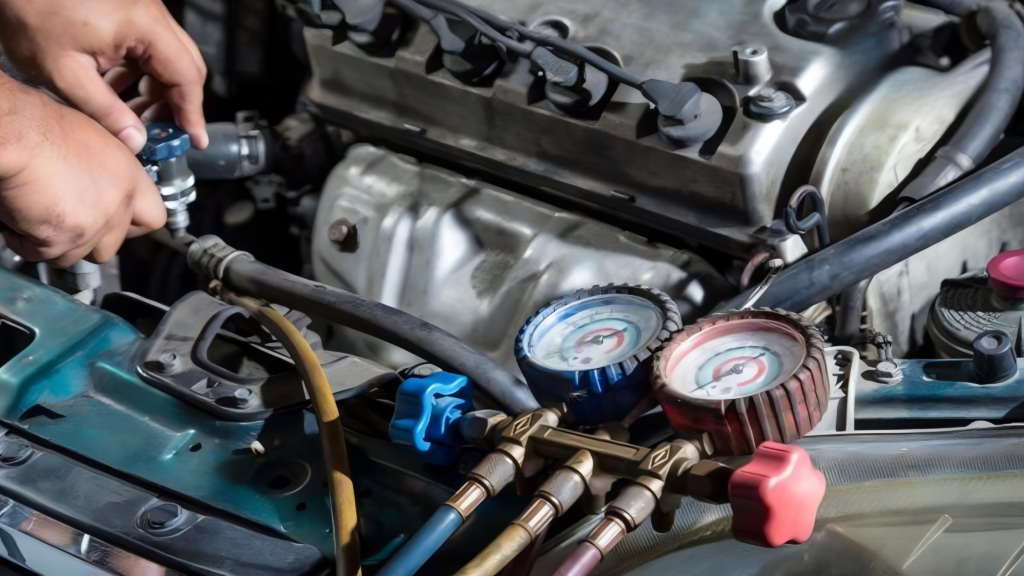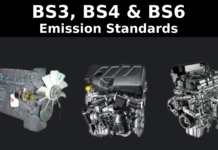Ever wondered how your car’s air conditioning keeps you cool on scorching summer days? How Does Car AC work It’s not just magic it’s a fascinating process that combines science and mechanics to deliver refreshing air at the push of a button. From compressing refrigerant to expelling heat, your A/C system works tirelessly to maintain a comfortable cabin temperature. Whether you’re curious about its inner workings or looking to keep it running efficiently, this simple guide breaks it down in an easy-to-understand way no technical jargon, just the essentials to help you stay cool on the road.
Key Points
How Car Air Conditioning Works

The High-Pressure Side
This is where the action kicks off think of it as the pushy part of the system, building pressure to set up the cooling magic.
A. Compressor
The compressor is the big boss, powered by your car’s engine through a belt. When you flip the A/C switch, it squeezes the refrigerant gas into a tight, high-pressure state. This squishing heats it up like blowing up a balloon fast and feeling the warmth. It’s the starting gun that gets the refrigerant racing through the system.
B. Condenser
Next stop the condenser, a radiator-like piece parked near your car’s front grille. The hot, high-pressure refrigerant flows in, and as air from driving or a fan whooshes over its fins, it cools down and turns into a liquid. The heat it’s carrying? It’s tossed out into the breeze like shaking off a heavy coat on a warm day.
C. Receiver-Dryer
This unsung hero is a small canister that cleans up the act. It filters out dirt and moisture from the liquid refrigerant so nothing clogs the system. Think of it as a bouncer at a club only the good stuff gets through. It also stores a little extra refrigerant, keeping the flow steady for the next step.
The Low-Pressure Side

A. Thermal Expansion Valve
The thermal expansion valve is like a clever gatekeeper. It takes the high-pressure liquid refrigerant and lets it trickle into a low-pressure zone. As it expands, it drops in temperature fast imagine popping a soda can and feeling that instant chill. This cold, misty refrigerant is now ready to work its magic.
B. Evaporator
Here’s where you feel the payoff the evaporator, tucked behind your dashboard. This little heat exchanger lets the cold refrigerant soak up the warm, muggy air from inside your car. A fan blows the air over it, and the refrigerant grabs the heat and humidity, turning back into a gas. The result? That crisp, refreshing air blasting through your vents.
Extra Insights for the Full Picture

The Refrigerant: The Cool Secret Sauce
None of this works without refrigerant a special fluid that’s the lifeblood of the system. It’s a shape-shifter, flipping between gas and liquid as it loops through, carrying heat out and coolness in. Fun fact: modern cars use eco-friendlier stuff like R-134a or R-1234yf, but it’s still a sealed deal lose it to a leak, and your A/C’s toast.
Blower Fan and Airflow
The blower fan is your delivery guy. It pulls in air from outside or inside, your call and pushes it over the evaporator to cool it down. Then, through a web of ducts and vents, it sends that frosty goodness wherever you aim it face, feet, or glass. It’s also why your windshield clears up fast it sucks out the dampness defogging windows.
The Engine’s Role: Powering the System
Your A/C isn’t running on pixie dust it’s tied to the engine. The compressor gets its muscle from a belt linked to the engine’s crankshaft. That’s why you might feel a slight lag when you crank it up, especially in a smaller car. It’s a small trade-off for staying sweat-free, right?
Maintaining Your Car A/C System

Why Regular Checkups
Your A/C’s a trooper, but it needs love to keep performing. Leaky hoses, low refrigerant, or a gunked-up condenser can slow it down or stop it cold (pun intended). That funky whiff? Probably mold in the evaporator from trapped moisture. A check every couple of years keeps it humming and your air fresh.
Signs Something’s Off
Keep an ear and nose out for trouble. Warm air, weird smells, or loud rattles from the compressor could mean it’s time for a fix. Catching it early saves you from a sweaty breakdown on the hottest day of the year. Trust me, you don’t want that.
Conclusion
Your car’s A/C is more than just a comfort feature it’s a clever system that uses refrigerant, pressure changes, and airflow to keep you cool. Now that you understand how car AC works, keeping it maintained is key to staying cool year-round From the high-pressure compression stage to the low-pressure cooling phase, every component works together to create that refreshing blast of air. By understanding how it functions and keeping up with regular maintenance, you can ensure it runs efficiently for years to come.
Frequently Asked Questions
01. Why’s my A/C blowing warm air instead of cold?
A: Could be low refrigerant, a worn-out compressor, or a blocked condenser. Get it checked leaks are sneaky little troublemakers.
02. Can I use my A/C in winter?
A: You bet! It’s perfect for defogging windows by drying the air. Just don’t expect a polar blast in December.
03. How often should I recharge the refrigerant?
A: Only if there’s a leak it’s a closed system otherwise. Fix the hole first, then top it off.
04. What’s that musty smell when I start the A/C?
A: Likely mold or bacteria in the evaporator. A new cabin filter or a quick cleaning spray can zap it.
05. Does running A/C hurt my fuel economy?
A: A bit around 3-10% since the engine powers it. But at highway speeds, open windows might cost you more in drag.








